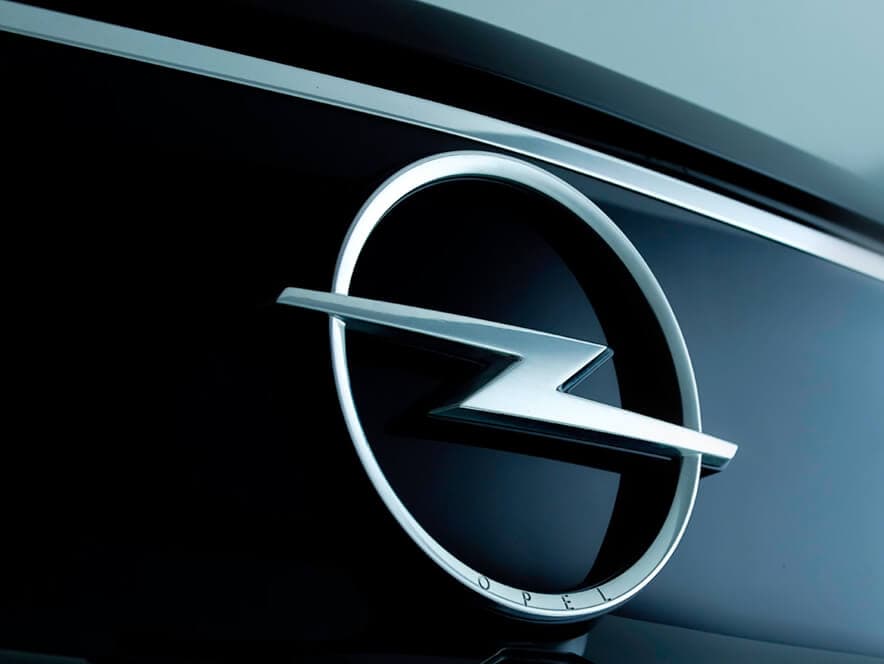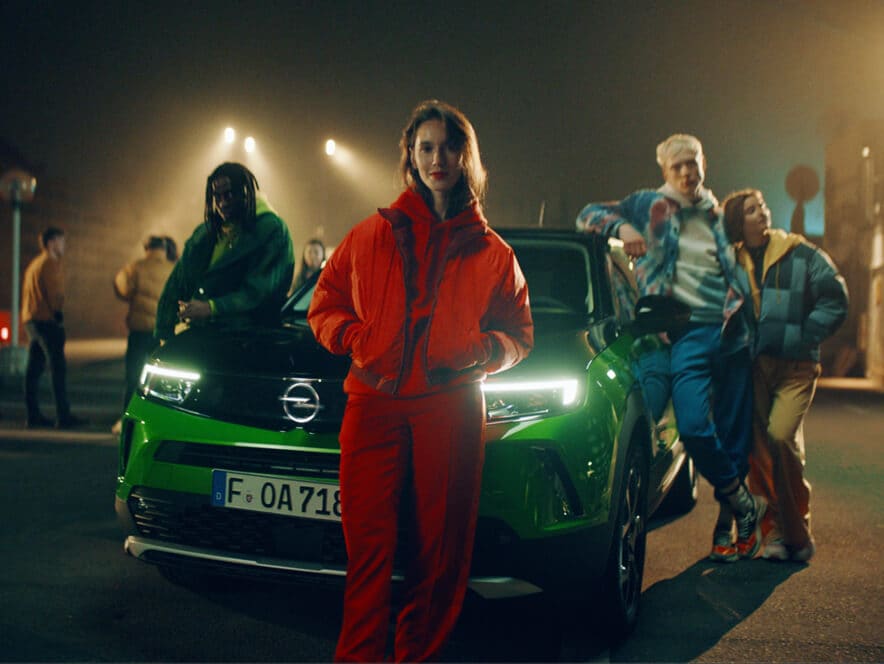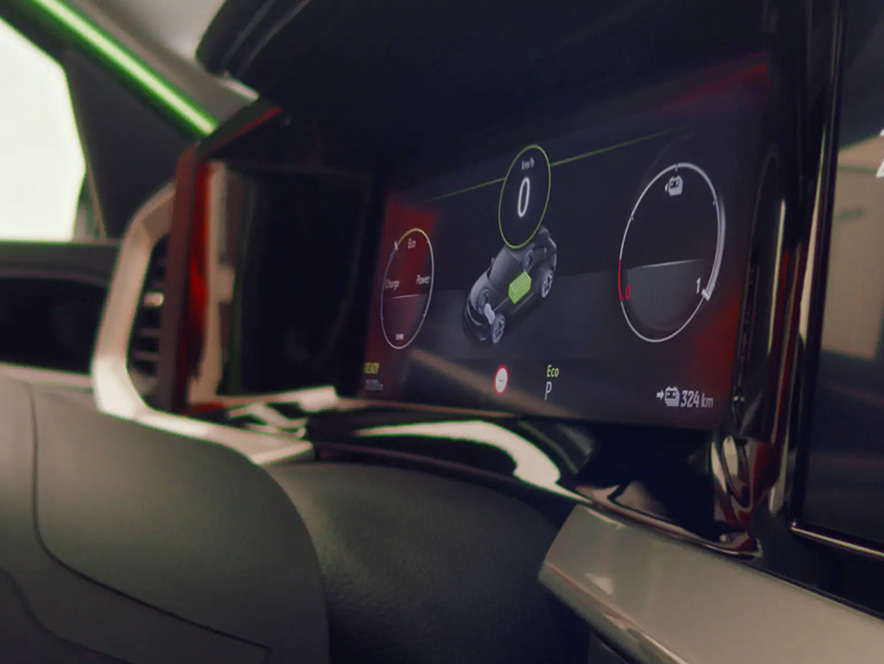CHARGING AND RANGE OF YOUR ELECTRIC VEHICLE.
Flexible charging on the road or at home.
EVERYTHING YOU NEED TO KNOW ABOUT CHARGING YOUR ELECTRIC VEHICLE.
Charge up your knowledge here.
How do you stay mobile with your electric vehicle? Quite simply by charging the battery regularly! How easy it is, what different options are available, what you need to bear in mind, how often it’s best to charge, and how much time you should plan for it? Get all the answers here.

DIFFERENCE BETWEEN AC CHARGING AND DC FAST CHARGING
Almost all of our household appliances are powered by alternating current (AC) because it allows the electrical charge to be transported more efficiently over long distances. However, devices with built‑in batteries must be charged with direct current (DC). This includes mobile phones–and also electric vehicles.
AC must first be converted into DC inside the vehicle using an on‑board charger. And that takes time. AC charging is possible almost everywhere and AC charging stations have standardised connections, Type 2 charging sockets.
Charging is therefore faster at a DC fast charging station and is correspondingly more expensive. AC from the mains is converted by the fast charging station into DC and can be fed directly into the battery. DC fast charging stations are currently only available in public areas but you can charge your electric vehicle faster than at any other power source.

CHARGING AT PUBLIC CHARGING STATIONS
There are more and more public charging stations where you can charge your electric vehicle. Supermarkets, car parks, public facilities and hotels increasingly provide charging stations in their car parks. As of September 2022, there are over 3,000 public charging stations across the island. To locate your nearest EV charging station in Singapore, download the MyTransport.SG mobile app.
The Singapore Government targets to have all 2,000 Housing Development Board car parks to have at least 3 EV charging points by 2025 and to deploy 60,000 EV charging points across Singapore by 2030.
For road trips into Malaysia and beyond, download the PlugShare mobile app. The large number of growing providers across the causeway makes long drives effortless. There are different charging options offered with different charging rates and web-based payment is made via the individual provider’s smartphone app.

PRIVATE CHARGING SOLUTION
Charging your electric vehicle at a private location such as your home or office has numerous advantages and is simply practical: it is cheaper and gives you flexibility, because you can set off at any time with a charged battery–but a few things have to be in place: for example, the ability of installing a wallbox in the first place.
A home or office with its own garage is particularly suitable for this. A wallbox can be installed, but it should be protected against rain and secured against unlawful use.
In apartment buildings and semi-private locations, you should check whether a wallbox can be installed in the immediate vicinity of a parking space.

MANAGE YOUR ELECTRIC VEHICLE VIA THE APP
With the OpelConnect E-Remote Control service, you can easily control charging and pre-entry climate control via the myOpel app1. So you always have an overview of:
- How much battery power you have left
- How much range is left
- How long it will take for the battery to be fully charged
You can also check the interior temperature of your electric vehicle and then switch on the heating or air conditioning remotely. If the vehicle is still connected to the mains, this will also save energy and optimise the range.
1 Services are subject to the coverage and availability of the mobile network.
MORE ABOUT CHARGING: COSTS, TIME, CONSUMPTION.
Find out how quick and affordable it is to charge your electric vehicle.

CHARGING COSTS
It all depends on where you charge your electric vehicle: you can charge it particularly cheaply at your own wallbox, because there you pay the current electricity price. You can freely choose your electricity provider and keep the costs for charging as low as possible. If you fully charge your 75 kWh battery, it will cost you an estimated $36.30 (2021).
Charging at public fast-charging stations is more expensive. Here you have to reckon with costs of up to 55 cents/kWh, which is around $41.25 for charging the battery. This is still significantly cheaper than filling up an internal combustion engine vehicle with fuel.
You can travel much more cheaply with an electric vehicle than a vehicle with an internal combustion engine. The latter requires about three times the amount of energy for the same distance.

HOW LONG DOES IT TAKE TO CHARGE AN ELECTRIC VEHICLE?
How long your electric vehicle takes to charge depends on three main factors: how full your battery is, its size or capacity (in kWh), and how much charging power your power source has (in kW).
You can easily calculate the charging time of your electric vehicle: divide the battery capacity by the charging power. For the Mokka-e, 50 kWh divided by 11 kW equals 4.5 hours from zero to 100%. At a fast charging station (DC), you can charge your battery from zero up to 80% in around 30 minutes.
However, the charging power is not always constant during the charging process. There are several factors that can influence the charging performance of your electric vehicle, especially the outside temperature and the charge level of the battery. In winter or summer, the charging time can be correspondingly longer. In addition, the charging speed is higher when the battery is between 20 and 80 percent charged.
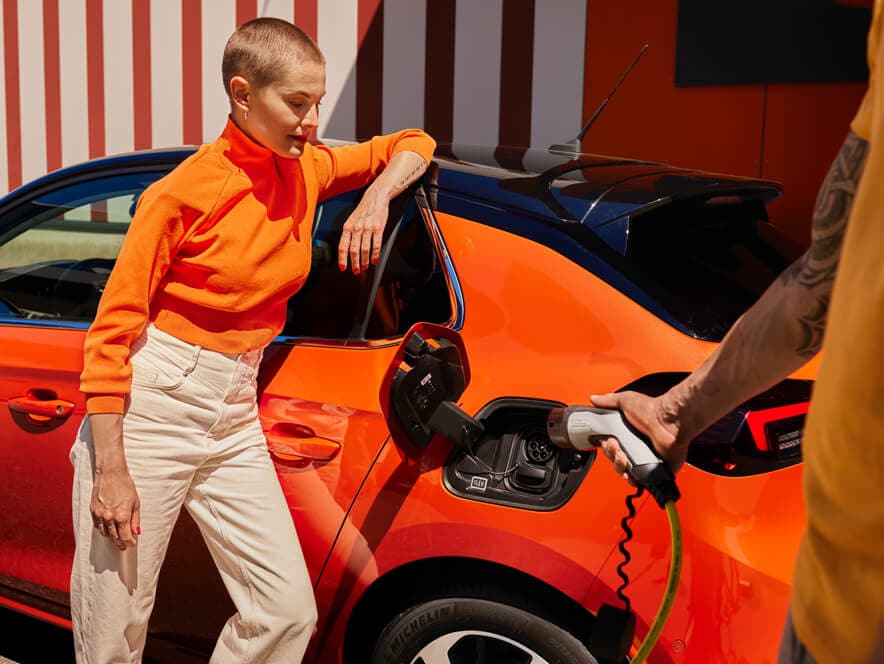
HOW MUCH ENERGY DOES AN ELECTRIC VEHICLE CONSUME?
The electric vehicle scores points, among other things, for the efficiency of its drive: the electric motor converts around 80 percent of the energy supplied into motion. If you include the losses that occur when charging the battery and providing the electricity, you get an efficiency of 64 percent. This means that an electric vehicle is about three times as efficient as a vehicle with a conventional combustion engine–the efficiency of a combustion engine is only about 20 percent in normal driving conditions.
The energy consumption of an electric vehicle is given in kilowatt hours (kWh) per 100 km. For the Opel Mokka-e, the average power consumption (WLTP) is 17.4 kWh. However, the actual consumption depends on various factors: your personal driving style (how often you accelerate), the nature of the route (mountain road or flat country), the outside temperature (winter or summer), the use of heating and air conditioning, and any additional weight (how many people are in the vehicle).
USEFUL INFORMATION ABOUT ELECTRIC VEHICLE RANGE.
The days when electric vehicles were only good for short trips are long gone.
BATTERY RANGE ON THE RISE
Developments in battery range are progressing at a rapid pace: nowadays, electric vehicles offer considerable range and with it all the freedom you could wish for. Ranges of 250 to 300 km*** or more are standard–and the limits are constantly being pushed upwards.
HOW ELECTRIC VEHICLE RANGE IS CALCULATED
The globally standardised measurement method for the range of electric vehicles is called the “Worldwide harmonised Light-Duty Vehicle Test Procedure”—WLTP for short.
Sometimes you also read NEDC: it refers to the “New European Driving Cycle”, but this test method for Europe was replaced by the WLTP in 2021.
The new WLTP driving cycle provides more realistic consumption figures, taking into account situations that are closer to everyday life than the NEDC standard—the best way to estimate your daily consumption.
WLTP stands for:
Read more about the NEDC and WLTP measurement methods.
ELECTRIC VEHICLE RANGE TEST METHOD
There are two common test procedures worldwide for the range of electric vehicles: WLTP (Worldwide harmonised Light-Duty Vehicle Test Procedure) and EPA (United States Environmental Protection Agency). Both determine their data very close to everyday practice.
In the NEDC test, which was used in Europe until 2020, the test possibilities were less realistic: the average speed was 34 km/h, the vehicle was only loaded with 100 kg (which does not even correspond to the driver and passenger) and real-life conditions such as temperature, weather conditions and driving style were not taken into account.
The two test methods commonly used today give you a better chance of realistically estimating the range of your electric vehicle: The average speed is 46.5 km/h (maximum 131 km/h), the duration of the test has been increased from 21 to 30 minutes.
The WLTP also examines all available engine-transmission combinations—as well as optional equipment that also influences the weight and aerodynamics of the vehicle. Furthermore, measurements are taken at 23 °C and also at 14 °C, which corresponds to the average temperature in Europe.
HOW TO GO EVEN FURTHER IN YOUR ELECTRIC VEHICLE.
There are lots of small things you can do to extend the range of your electric vehicle. And even though you can’t influence everything, you’ll find some useful tips here.

DRIVING STYLE
Two factors in particular influence the range of your Opel electric vehicle: how fast you drive and how hard you accelerate. As a rule of thumb, if you double your speed, you halve your range. And every time you accelerate, your vehicle consumes energy.
- Drive slowly and avoid unnecessary acceleration
- Look ahead and anticipate to avoid braking unnecessarily
- Don’t use sport mode if you don’t need it
- On the motorway, try driving at a safe distance behind another vehicle that’s travelling at a steady speed
- Try to avoid large, steep hills when planning your route
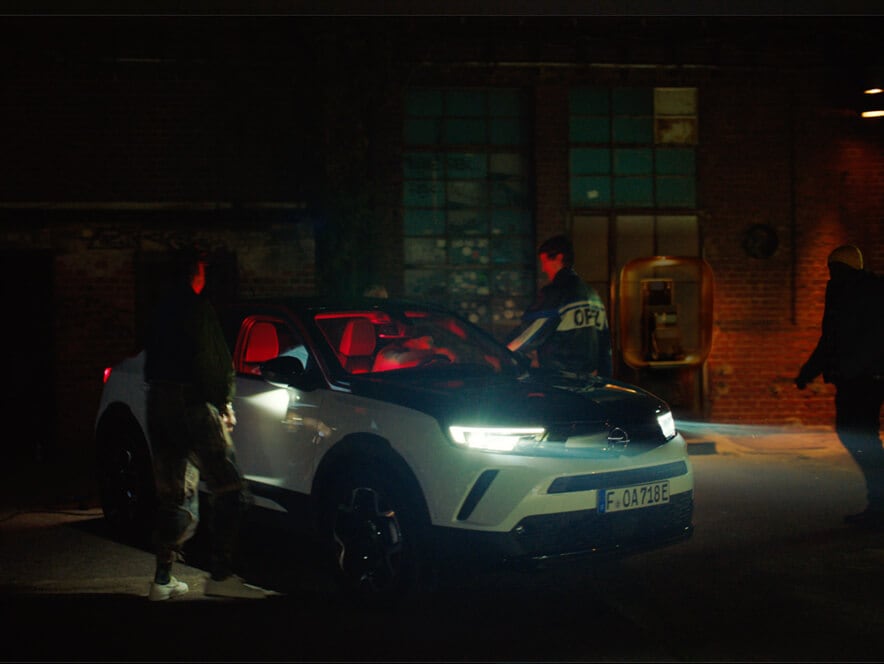
EXTRA WEIGHT
The weight of your vehicle has a direct effect on the range. It’s best to check what unnecessary weight you can easily do without before you start:
- Make sure there’s nothing in the luggage compartment or on the back seats that you don’t really need
- Remove unnecessary accessories
- Have a roof rack? Then take it off when it’s not in use, because it increases air resistance.

TYRE PRESSURE
Underinflated tyres mean more work for the engine—whatever the type—because there’s more road contact. When it comes to electric vehicles, you’ll really notice the big impact it has on range.
- Check tyre pressure at least once a month and before long journeys
- If necessary, fill them up at the nearest petrol station according to the recommended values
It really pays off!
WHAT ELSE MATTERS.
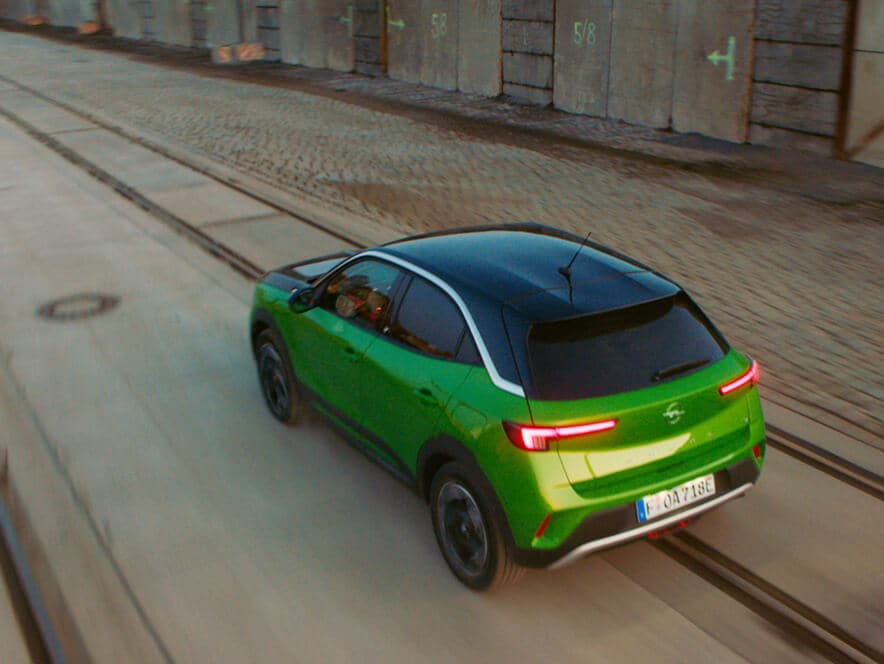
A CAUTIOUS APPROACH
While speed is a big factor when it comes to range, so is constant acceleration and braking. That’s why it’s best to choose the ECO driving mode. A proactive, energy-saving driving style combined with your electric vehicle’s regenerative braking system can give you up to 15% more range.

AIR CONDITIONING
The energy for the air conditioning comes directly from the vehicle’s battery, which can affect the range of your electric vehicle. Here’s a useful tip: pre-cool your electric vehicle—for example via the myOpel app—while it’s connected to the mains. If you do this, you won’t deplete the battery.
The biggest influence on the remaining range as displayed on the instrument panel is your driving style. The range is constantly recalculated and if you manage to reduce energy consumption by following the tips mentioned, the display automatically adjusts.
MORE ON CHARGING AND RANGE.
HOW OFTEN DO YOU NEED TO CHARGE AN ELECTRIC VEHICLE?
It all depends on how much you drive—and your driving style. If you drive in an energy-saving way, your Opel electric vehicle could take you around 330 km. On average, people in Germany commute just 20 km to work. If you travel a lot for work, you can always charge the vehicle at night to be ready for the next day. By the way, it is advisable to always keep the battery level between 20 and 80% to preserve the battery.
HOW FAR CAN AN ELECTRIC VEHICLE GO?
As an example, the maximum range of the Vivaro-e as measured by WLTP is up to 330 km*** with a fully charged battery. However, this value may vary in everyday driving and depends on factors such as your personal driving style, the type of route and altitude metres covered, the outside temperature, use of heating and air conditioning and possible additional weight.
Note that the average drive-commute is around 34 kilometres per day and 95% of all everyday trips are shorter than 50 kilometres.
HOW MANY KW CAN AN ELECTRIC VEHICLE STORE?
How much your electric vehicle can charge depends on the capacity of the battery: Opel offers 50 kWh and 75 kWh batteries. The fastest way to refuel them is at a DC fast charging station. But even with AC charging, there are differences in speed depending on the charging station and the battery charge. If the battery is already charged 20–80%, charging is faster. Likewise, if it is not significantly colder or hotter than 20 degrees Celsius.
NOT FOUND THE RIGHT INFO YET?
ELECTRIC VEHICLE MODELS
Opel Electric Passenger Cars, SUVs, MPVs, and Commercial Vans. E‑mobility made easy. Choose your e‑model and set off on your zero‑emissions journey.
ELECTRIC VEHICLE BENEFITS AND INCENTIVES
Electric vehicles—whether as private, company, or commercial use—offer financial advantages. They don’t have a negative impact on CO2 emissions or the climate, they require little maintenance, and use resources more efficiently—indeed they can be powered using renewable energy. Just a few of the many reasons why we believe our future is electric.
ELECTRIC VEHICLE BATTERIES
The battery of an e-model consists of battery cell modules. The more modules, the greater the range. Modern systems rely on “pouch cells”, which are similar in design to mobile phone batteries. In addition to this high-voltage battery, there is also a 12-volt battery that supplies the on-board electronics.
WHAT’S NEXT?
Discover how much you can save by requesting for a vehicle trade-in quotation. You also have the option to arrange an appointment for a test drive at your convenience. If you have any questions about our Electric Vehicle range, a dedicated Opel advisor can be easily reached to provide you with personal guidance. We appreciate your interest and are happy to help.





